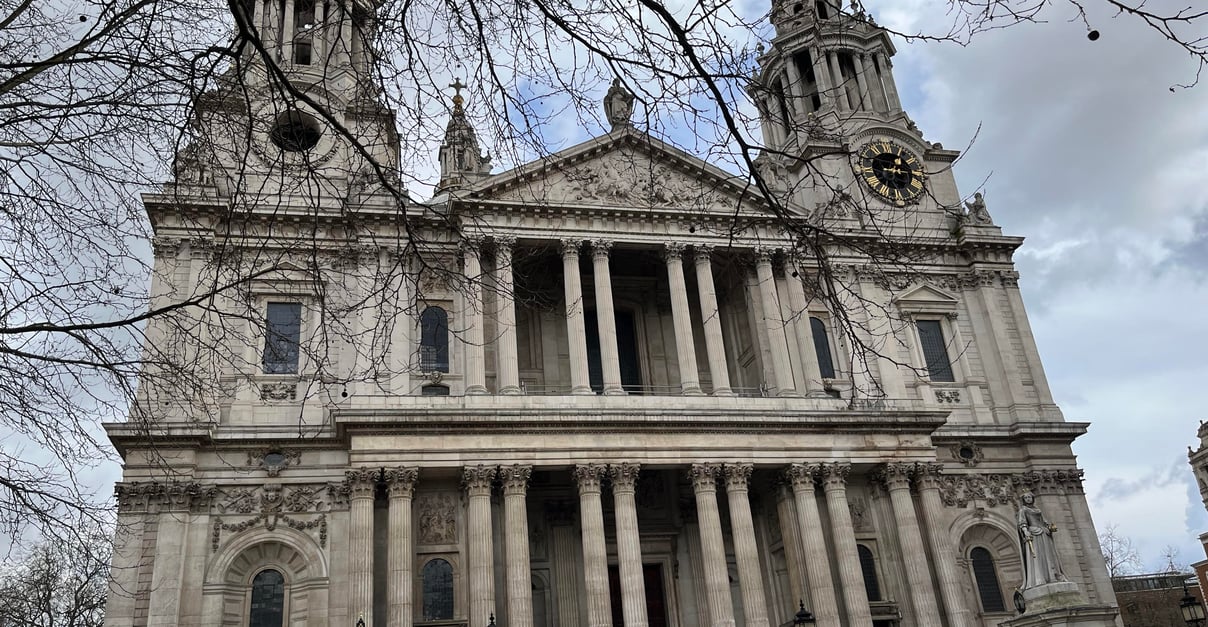Although buildings can be magnificent and draw quite the crowd, they probably aren't helping anyone to follow Jesus more deeply.
I recently returned from spending a week in Northern Europe. My wife and I spent time in England, Germany, Belgium and the Netherlands.
We tried many different foods, met many different people and saw many different things. Most of these sites were quite old.
These ancient sites and churches represented so much about the people and the period in which they lived.
Since these structures were built, almost everything in the world has changed. Architecture and engineering has changed. The languages and methods of how people communicate has changed. Almost everything has changed.
The one constant has been the Gospel and the mission of the Church.
Buildings Can Be Magnificent, But They Can't Change Hearts
As I stood and marveled at some of these ancient churches (some of which were nearly a thousand years old) I had a thought cross my mind, "This building isn't the church."
This beautiful, historic building was likely once the center of Christianity in the area. It likely attracted worshippers from hundreds of miles and news of its grandeur likely spread even farther.
Now, it's more of a museum/tourist attraction/landmark.
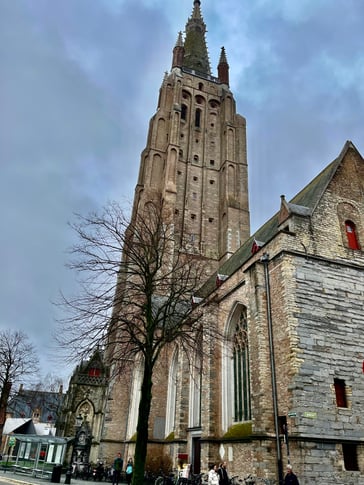
Church of Our Lady - Brugge, Belgium
Impressive, no doubt. And for their time, these buildings were marvels of their age.
A millennia later and churches still place a huge emphasis on their building, even when everything else about civilization has changed.
Now, I’m not against a gathering place for believers. This is obviously essential to our faith and walk with Jesus. The church is crucial to all of it.
However, just like back then, it seems like so much of our focus and resources are placed on a physical structure. And unfortunately, most of them don't look like this:
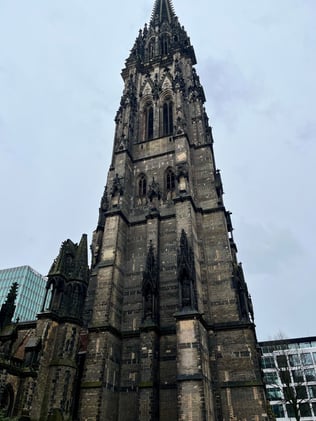
St. Nikolai Church - Hamburg, Germany
How do we inspire the hearts and minds of today’s believers, pointing them toward further Christ-likeness? Even when it’s a Thursday and the short lived momentum from Sunday has cooled in our lives?
Someone smart once said, “We learn in rows but grow in circles.”
And that is so true.
As valuable as Sunday teaching is, the real growth happens in community with other believers.
The teaching of our faith is so strong and readily available today. It has never been easier to watch or listen to the greatest teachers and preachers of the modern era.
So, what about the growing part? How are we equipping the people of the church to grow and spread the message of Jesus?
I’d contend the modern church is struggling with this. There must be growth, not just at the individual level, but at the church level. How can we push ourselves to try new things and spread our faith beyond what has been known?
It will likely require us to go beyond what we’re comfortable with.
Buildings are comfortable. They are fairly easy to maintain, we know how much they will cost and it’s how we’ve always done it.
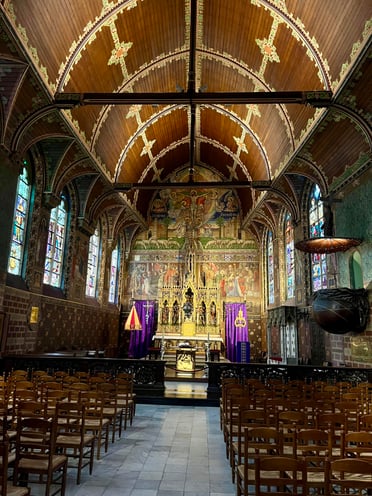
Basilica of the Holy Blood - Brugge, Belgium
But community? Community is hard. Creating community requires time, effort and it can be unpredictable.
And that’s mostly because people are the same way. We require time, effort and can be rather unpredictable.
But unlike buildings, the people of the church are flexible. We can move and travel to the far reaching corners of the earth.
And we’re alive.
I like when churches take pride in their buildings. But I always shudder when they suggest making it the focal point of their website or any other aspect of the church’s identity.
The church is the people. Because people help other people grow. They can teach, lead and disciple.
And as far as technology has come, buildings still can’t do any of those things. Maybe someday they will, but as of this writing that still seems like an unlikely scenario.
So, what do we do now?
Invest in people and programs to support their growth.
What kinds of people will help spread your church's mission? What roles do they need to be in to facilitate growth and expand discipleship programs? How do we need to shift our internal priorities to place an emphasis on measuring and sustaining spiritual growth?
These are all questions to begin pondering as we seek to promote Sunday through Saturday Christians—people who live by faith and walk with Him every day—even after the Sunday service is completely out of their thoughts.
As much as I'd love to give you tangible next steps, the more impactful ones are philosophical. It's about shifting priorities and budgeting—not just money, but also time.
If our staff spends 70% of their time working on the Sunday morning in-building experience, then that's what 70% of our church's discipleship will look like. An hour on Sunday.
Invest in the whole range of what ministry is, not just a weekly hour of it.
The church is the people, not the building.
If we’re lucky, our buildings will still be standing hundreds of years from now. But by then, they might just be tourist attractions, reminding us of how things used to be—out of place in an ever evolving world.
But the people. The people will always be able to spread the Good News and adapt to the world as it is.
And while this building was super cool:
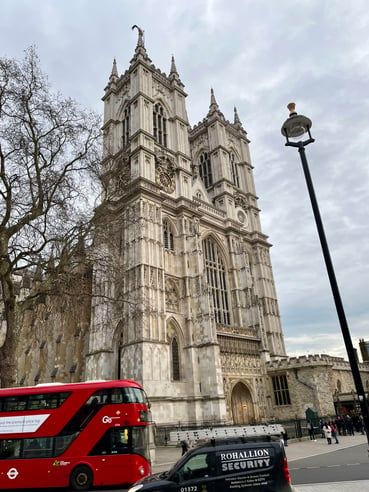
Westminster Abbey - London, England
It doesn’t inspire me to follow Jesus. My wife does. My friend does. My pastor does. My community does.
People do.
The Church is the people.
